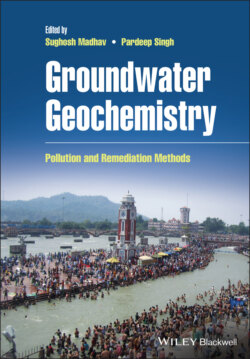Читать книгу Groundwater Geochemistry - Группа авторов - Страница 34
1.7 Selenium
ОглавлениеSelenium is a crucial element, but at higher concentrations, it is toxic (Sharma et al. 2015). Natural sources of Se account for 50–65% of total emissions, globally. Natural sources of atmospheric selenium are crustal erosion, which causes its suspension in soil and dust, biologically originated volatile organo‐selenium compounds, volcanoes, and aerosol particles related with sea spray (Nriagu and Pacyna 1988; Sharma et al. 2015). Sedimentary rocks have a higher concentration of Se than the igneous rocks. Its concentrations in underlying rocks are strongly correlated with its concentration in soils. Soils rich in Se are frequently originated from marine deposits. In the oxic environment of surface soils, the main species of Se are selenite (Se (IV)) and selenate (Se (VI)) (Sharma et al. 2015).
It is a minor constituent of natural waters, and its level in water is generally found to be less than 10 mg/L (Sohrin and Bruland 2011). Laboratory studies suggested that a nonvolatile dimethyl selenonium ion can probably be changed into volatile dimethyl selenide at neutral pH (Cooke and Bruland 1987). This can be attributed as its pathway for the in‐situ origin of dimethyl selenide in natural waters. Selenium chemistry in groundwater is controlled by four crucial variables. These are the prime source, the transportation in solution, the courses of mobilization, and retaining at the water–solid interface and its level in groundwater under a semiarid and arid environment (Nicolli et al. 2012). Selenium in groundwater is restricted to particular locations and has been reported from dispersed areas in Himachal Pradesh and Punjab (CGWB 2014; Lapworth et al. 2017).
